Top Takeaways and Key Concepts
→ Practice both fades and draws to expand shot variety and improve course adaptability.
→ Adjust your grip and stance to shape ball flight direction with greater control.
→ Visualize every shot before swinging to enhance focus, precision, and confidence.
→ Adapt to course conditions by adjusting aim and strategy for wind or slope.
→ Embrace mistakes as learning opportunities and stay patient while refining your swing.
Summary of This Article
This article explores how mastering fades, draws, and visualization transforms your control on the course. By adjusting grip, stance, and mindset, golfers can adapt to any condition with confidence. Each swing becomes a chance to learn, improve, and enjoy the creative side of golf while developing consistency and precision through patience and practice.
Video Summary
Please Note: This post may contain affiliate links. If you click one of them, we may receive a commission at no extra cost to you. As an Amazon Associate, I earn from qualifying purchases.
I was standing on the tee box, staring down the fairway like a deer caught in headlights. My friends had just hit their drives straight down the middle, while my ball? Well, it decided to take an unexpected detour into the trees. Ugh! If only I could shape my shots with a flick of the wrist like those pros on TV. Wouldn’t that be nice?
Shot shaping is like magic. Seriously! Learning how to fade or draw your shots can change everything. A fade curves gently to the right for right-handed players, while a draw goes left. Sounds cool, right? With some practice—and maybe a sprinkle of luck—you can turn those wild shots into something amazing.
Imagine this: you’re standing over the ball and thinking about how you want it to move. It’s not just hitting; it’s creating art! Picture it soaring through the air exactly where you want it to go.
But hey, let’s keep it real. Mastering shot shaping takes time and patience—like waiting for your coffee to brew while you’re juggling breakfast too! Sometimes you’ll hit that perfect shot, and other times… well, you might end up in another tree (or worse). That’s okay!
When practicing fades or draws, focus on your grip and stance first. A light grip helps control the club better—like holding onto a delicate sandwich instead of squishing it flat! Then align your body slightly left for a fade or right for a draw.
Try visualizing each shot before taking it. Imagine how it will curve in the air—it really helps clear your mind amidst all those distractions around you.
Mistakes will happen; they always do! Just remember to laugh them off with friends when they see your ball going sideways again. Keep trying different things until something clicks.
With time and practice—oh look at that squirrel over there—you’ll start seeing improvements! Embrace every swing as part of your journey toward becoming a better golfer. Who knows? You might surprise yourself one day with that perfect fade or draw!
Understanding Shot Shape Basics

Let's start at the beginning, because everyone likes a good story. If you're a right-handed golfer, a fade is when your ball curves gradually from left to right. A draw? That's not right; it curves from right to left. Your golf ball has its own personality, just like you! One is nice and courteous, while the other is a little naughty and rebellious.
It can be hard to learn these shots, like attempting to train a cat to fetch. Sometimes it's really annoying! But what if it really works? Wow, it feels great! You feel that small surge of happiness, like when you find an extra fry at the bottom of the bag.
Don't rush it. First, make sure your stance is precisely correct. Shoulder-width apart feet and knees slightly bent. Then hold on to that club like it's something really important, because it is! Don't aim for where you don't want the ball to go. Aim for where you do want it to go.
Now it's time to have some fun. To hit a fade, open up your clubface a little bit at address and swing following your body line. For righties, this means swinging a little to the left. Picture yourself gently guiding the ball to its new home.
To get a draw, close the clubface a little and aim a little more to the right than usual. Follow that line and let the magic happen as it curves back toward the fairway, like a boomerang returning back home.
You get better with practice! Don't worry if it doesn't click immediately away; every golfer has to learn how to play. Do you remember when everything seemed wrong? Yes, we've all been there.
Be patient with yourself. Don't forget to celebrate the little things! Like when you finally hit that shot or just feel better about swinging away without worrying about getting into trouble.
And if things get hard? Take a big breath and chuckle about it. You might even picture that cat trying to fetch again! You can do this! Keep swinging and have fun every minute on the course.
The Art of Hitting a Fade
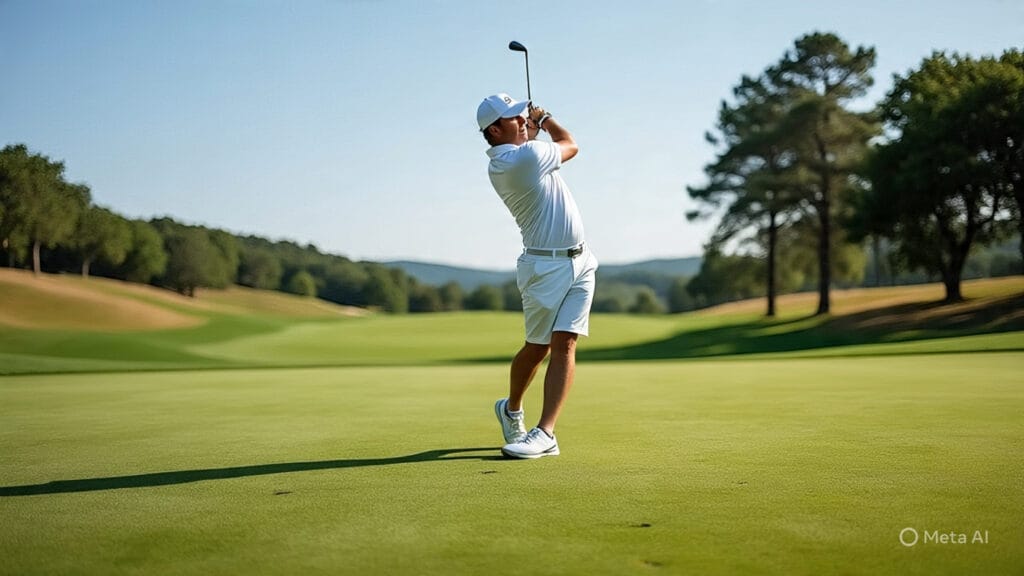
Let's get right into that hard fade. Imagine this: you're about to do some surgery, but not with sharp tools. You're going to use your trusty driver. You really need to be exact here!
First, make sure your alignment is perfect. Point your body a little to the left of where you want the ball to go. But make sure the face of the club is still pointed straight toward your target. It's like attempting to hit a piñata from the side.
Oh my, I remember the first time I tried to hit a fade. I aimed so far to the left that I almost hit my friend on another hole! He was just going about his business when, all of a sudden, whoosh! Not what you want on a good day of golf.
It's time to have fun after everything is ready. Instead of swinging directly at the target, swing along your body line. At first, this might seem strange, but I promise it works! When you hit the ball, think about making that outside-in swing path magic happen. That's how you obtain that nice curve that we all like to look at from a distance.
Before you swing, take a big breath. Also, relax your shoulders. Stress won't assist anyone here! As you follow through, visualize the ball flying through the air and bending like a ribbon in the wind.
And what if things don't go as planned? No big deal! Just laugh it off and remember that every golfer has made mistakes. Keep working on it, and soon you'll be able to hit those fades like a pro! Enjoy every swing; it's all part of the trip!
Practicing Your Fade
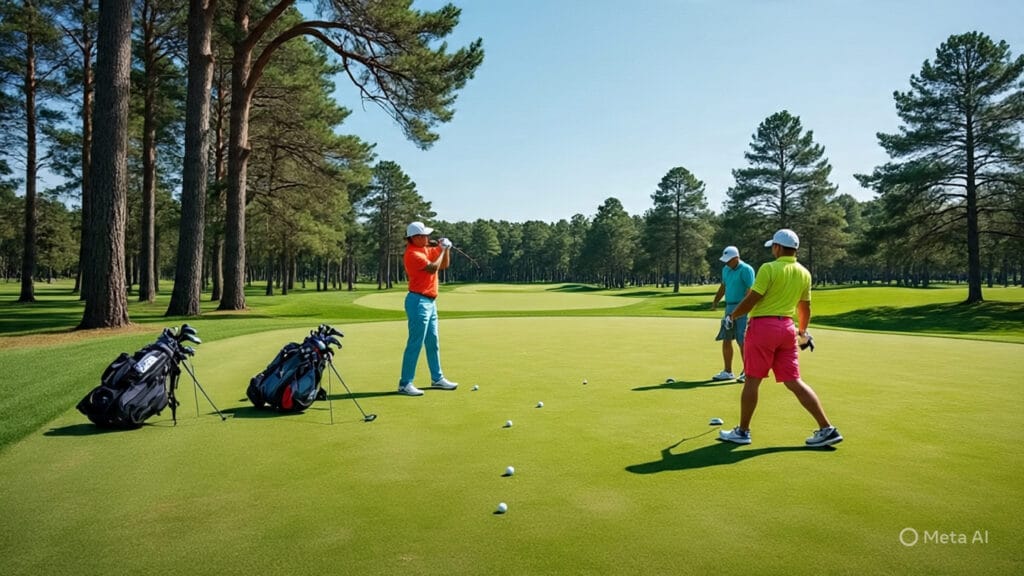
You might be wondering how to practice that fade without putting other golfers in danger. I completely understand! Setting up targets on the range is an excellent method to achieve this. You can use towels or cones as small markers. This helps you get things in line, which we talked about before. It's like having your own little obstacle course!
I have to tell you this humorous anecdote. One time, I spent the whole afternoon thinking that if I yelled “Fade!” really loud while I was swinging, it would happen. It was like ordering pizza by yelling at the sky! Can you picture it? Warning: it didn't work at all! But my pals thought it was funny.
But the magic happens when you practice all the time. Every time, pay attention to what you're doing. Pay attention to how you set up and how you swing. Don't worry too much if something seems odd. Just change it and try again.
It's all part of the process of learning! Every swing teaches you something new, even if it doesn't go perfectly every time. When you hit a great fade or just feel comfortable about your form, take a moment to celebrate.
So the next time you're at the range, get those cones or towels and have some fun! And don't forget that golf is just as much about having fun as it is about hitting beautiful shots. Keep smiling and swinging; you'll get there!
Unleashing Your Inner Draw Master
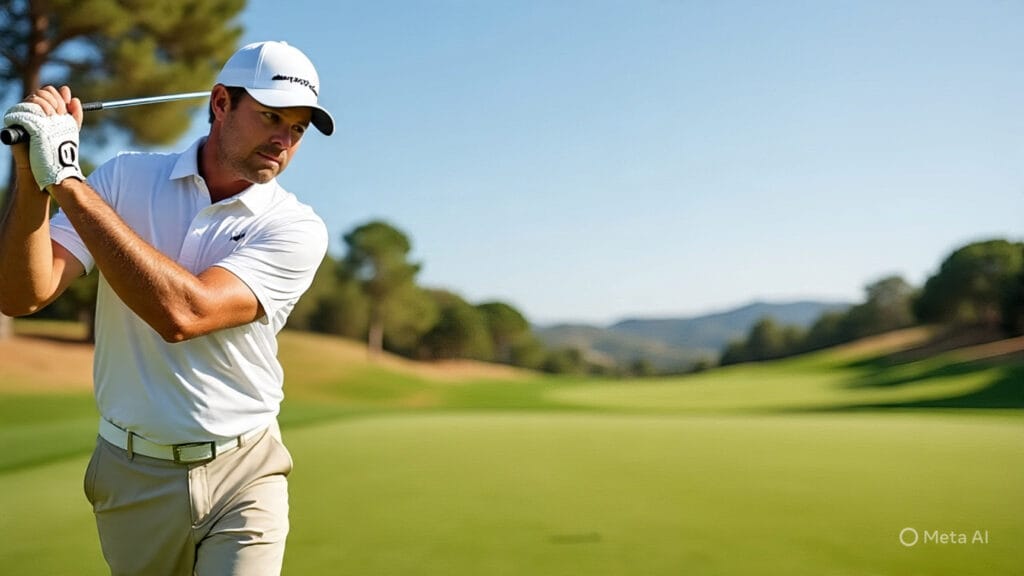
Let’s chat about drawing. It’s like the rebellious sibling of fading! Drawing can feel a bit scary since it needs confidence and finesse, but don’t worry! You’ve got this. Start by standing slightly to the right of where you want your ball to go. Keep that clubface aimed right at your target—yep, just like with the fade!
This time, think about swinging from the inside out as you hit the ball. Imagine giving your club a gentle nudge toward its destination instead of shoving it like you’re trying to push a stubborn car up a hill.
I remember one round that stands out so clearly. Everything just clicked! I hit this gorgeous draw that curved perfectly around some trees and landed softly on green grass instead of bouncing off rocks like it usually does. Oh man, that feeling was pure bliss! Like winning a mini lottery.
When you practice drawing, take your time and focus on those little details. Each swing is an adventure. Sometimes it’ll work beautifully, and sometimes it won’t. That’s okay! Just keep experimenting until you find what feels right for you.
So next time you're out there, channel your inner rebel and give that draw a shot. Enjoy every moment—it’s all part of the fun! And who knows? You might surprise yourself with how well you can shape those shots when you let loose a little!
Visualizing Your Shots
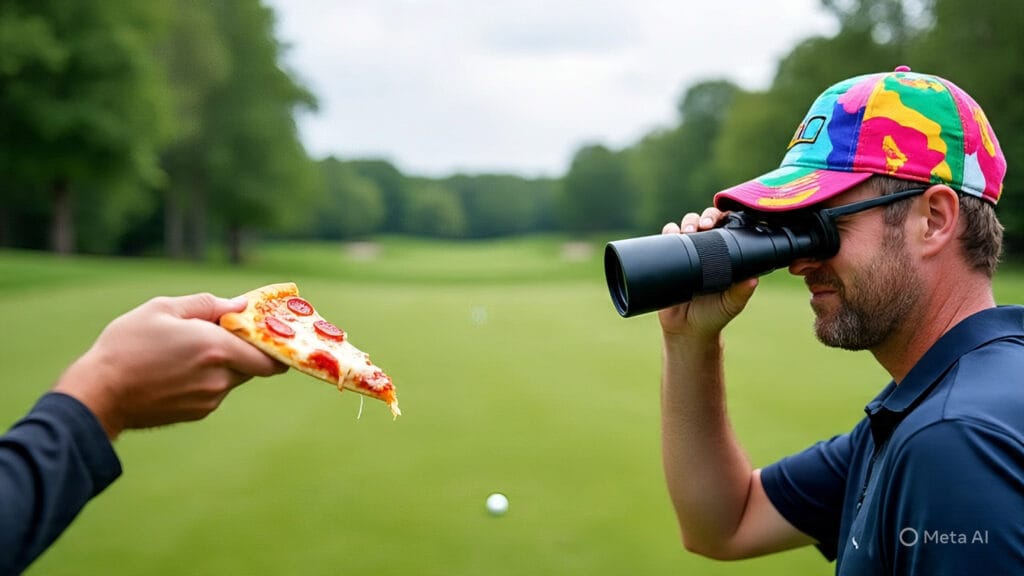
Let's speak about how we see things. It's really important for both fades and draws! Before you swing, think about how you want your shot to look. Imagine it flying through the air and bending just the perfect way. Imagine it as a small movie in your head before the big event.
If only there were apps that could help us with this… Oh, wait! There are a lot of them! Some are developed just to help golfers see their shots. That is incredibly cool! You can find one that shows you different shot shapes or even helps you plan your next move on the course.
These tools can be useful. It's like having a coach in your pocket who can assist you get ready to play or practice. It could be easier to hit that fade or draw if you can see it clearly in your mind.
The most important thing is to prepare yourself for success. The more you see those perfect shots, the easier it will be to make them when you're on the course. So choose your favorite app, close your eyes, and start imagining those beautiful swings! You might be surprised at how much it helps when you actually hit the ball.
Adjusting Based on Course Conditions
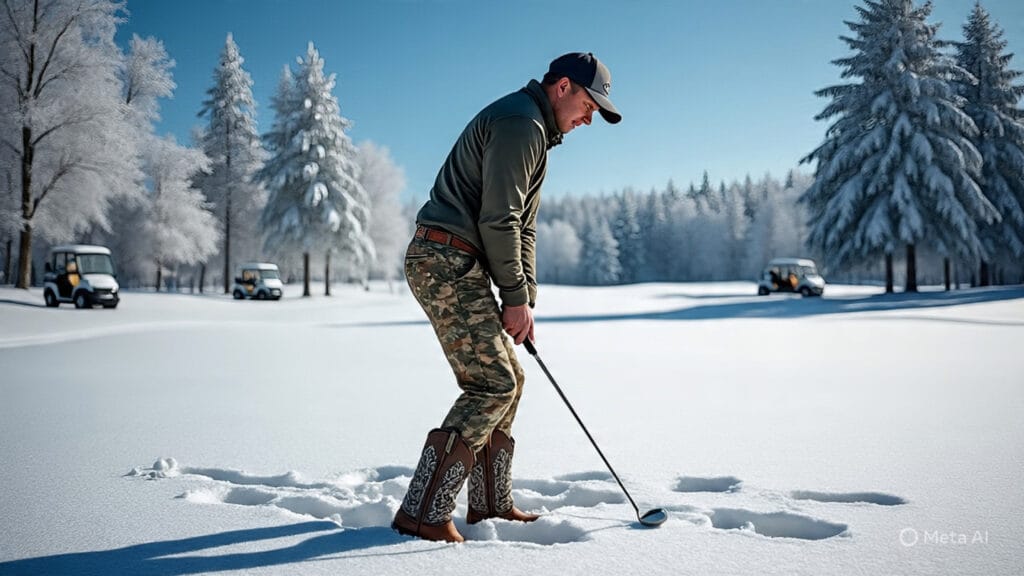
Let's speak about how to become used to the class. You know, wind and slopes can really influence how your shots act. Mother Nature loves to give her opinion!
It can be hard when the wind is blowing right at you. At times like those, hitting a fade might be the best thing for you. Fades are better than draws since the wind doesn't drive them off course as easily. It protects you from those powerful winds.
I remember one game when the wind was so strong that my planned draw transformed into a crazy adventure. The ball strayed off course and fell right in the thick rough. Wow, it was hard for me to get out of there! We laughed about it later, but what a shock!
It's important to keep an eye on the weather. If you see that the slope is leaning to the left or right, change your aim as well. A few small changes can make a big impact in how your shot goes.
While you're playing, keep an eye on what's going on around you. Don't let such challenges get you down; instead, embrace them. We learn something new every round, including how to deal with strong gusts or steep hills. Don't forget that every golfer has bad days; we're all in this together!
Bringing It All Together
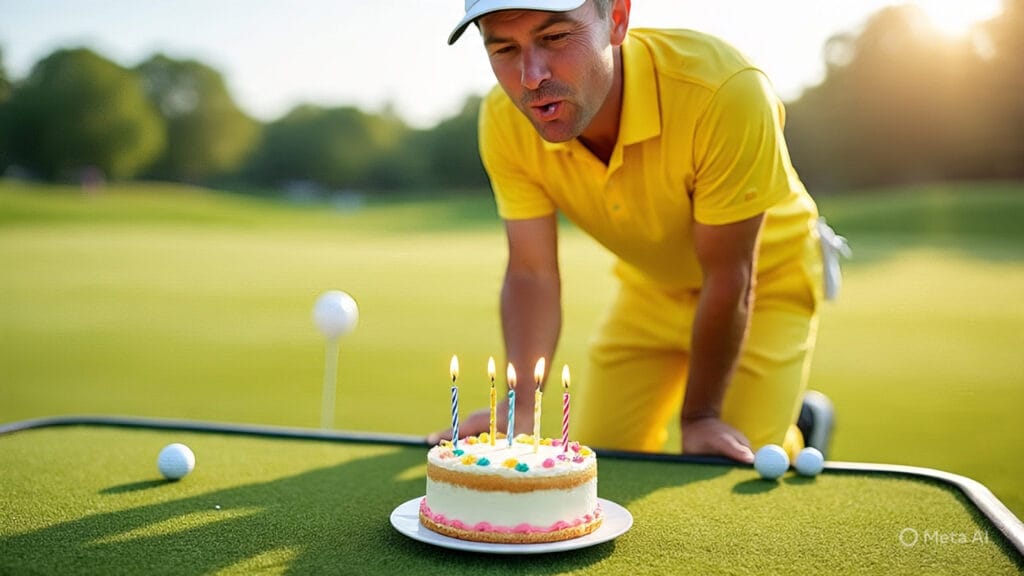
To actually get good at fades and draws, you need to be patient and practice. It's like making a cake. You need the correct things, some patience, and a little love to make it work. Every time you go to the course with friends, you can learn and have fun together.
Imagine this: you're out there swinging away, and you can be hitting some spectacular shots or some not so great ones. That's fine! Those times when you both say “oops” are what make it fun. I mean, who hasn't had a ball roll into a sand trap or land in the bushes? We've all been there.
Trying new things is also part of the game. Try out different things until you find one that works for you. You might get the perfect fade one day and then concentrate on your draw the next. Finding your rhythm and enjoying every swing is the key.
Also, don't be afraid of the stupid times. They are a part of the adventure! If you can laugh at yourself, an embarrassing shot can turn into a great narrative later. That happiness makes each round exceptional.
So get your clubs, go out with your friends, and have fun! Every round is a different journey with lessons and laughs along the way!
Featured Snippet: Mastering golf shot shaping means learning to control fades and draws through stance, grip, and visualization. By adjusting alignment, swing path, and adapting to course conditions, golfers can improve accuracy, creativity, and confidence with every swing while turning mistakes into valuable learning moments.
Frequently Asked Questions
What does shot shaping mean in golf?
Shot shaping is controlling the ball’s flight path to curve intentionally, such as creating a fade or a draw for better accuracy and control.
How can I hit a fade in golf?
To hit a fade, open your stance slightly and swing along your body line with the clubface aimed toward the target.
What is the difference between a fade and a draw?
A fade curves gently to the right for right-handed players, while a draw curves softly to the left.
How can visualization help improve my golf shots?
Visualization helps you mentally map your shot before swinging, improving focus, rhythm, and shot consistency on the course.
Why is adjusting my grip and stance important?
Your grip and stance control the direction and curve of the shot, helping shape the ball’s trajectory more effectively.
What should I do when weather affects my shots?
Adjust your aim and shot type to match wind and slope conditions. Fades often handle wind better than draws.
How can I get better at shot shaping?
Practice regularly with small adjustments in stance and swing path. Focus on consistency and patience while learning from mistakes.
Suggested Resources
How To Hit a Draw and Fade
https://www.golfdigest.com/story/how-to-hit-a-draw-and-fade
The Science Behind Golf Swing Path
https://www.golf.com/instruction/2020/02/04/golf-swing-path-science/
Perfecting Your Golf Swing
https://www.pgatour.com/news/2021/05/19/perfect-your-golf-swing.html

Kevin Collier is an avid golfer and contributing author at AIGolfTips.com, where he shares his passion for the game through expert tips, techniques, and gear reviews. With years of experience on the course, Kevin offers valuable insights for golfers of all skill levels, helping them improve their game and maximize their potential. Whether discussing swing mechanics or the latest in golf technology, Kevin's engaging approach aims to inspire and educate fellow golf enthusiasts to elevate their performance and enjoy every moment on the green.




